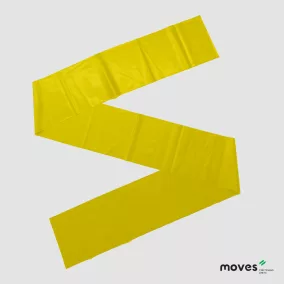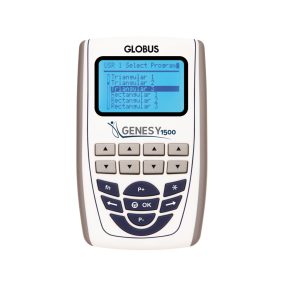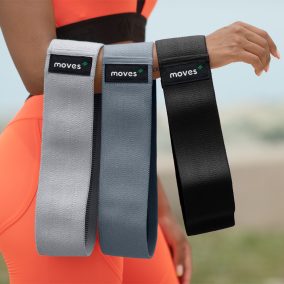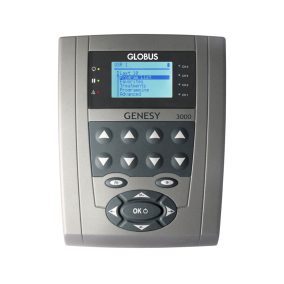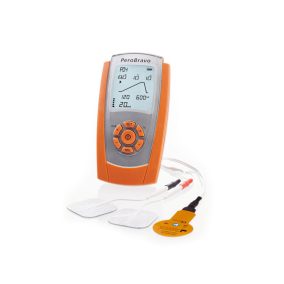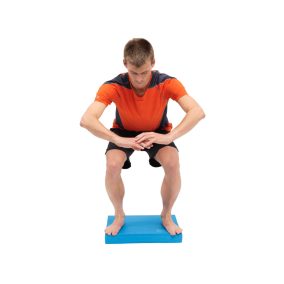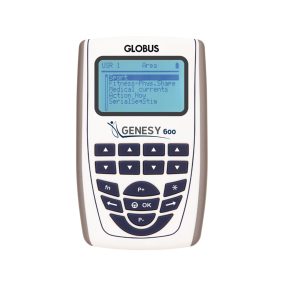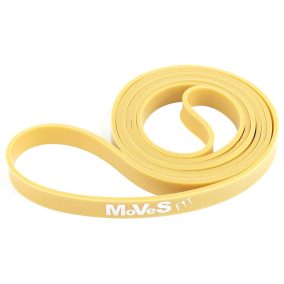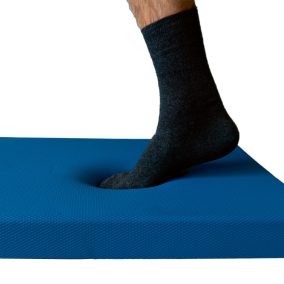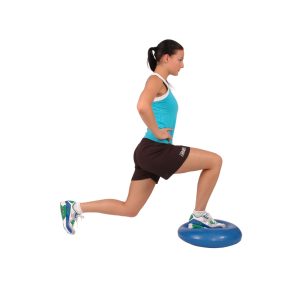The Moves Band is a reliable tool for professionals in physiotherapy, rehabilitation, and fitness. This dust-free, latex-based, premium quality resistance band is an ideal choice for everyday use, whether for muscle strengthening, mobilization, or functional training. The Moves Band not only helps increase range of motion but also develops muscle strength and the coordinated function of muscle groups.
What's in the package?
- Yellow - 1 pc - 1.0 to 2.3 kg resistance band
Genesy 1500: multifunctional electrotherapy device. TENS /EMS /MCR-MENS /FES / denervated / Kotz / IF / iontophoresis. 4 channels, battery and power supply operation.
Price includes: device, 4 cables, 2 cables for microcurrent treatment, 4 pcs 50x50mm and 4 pcs 50x90mm TENS electrodes, battery charger, carrying bag
The Moves Resistance Fabric Loops set is a modern and comfortable solution for those who want to effectively develop their muscle strength, mobility, or stability. The set, containing three fabric loops with different levels of resistance, is an ideal choice for functional training, rehabilitation, and body shaping.
Genesy 3000: multifunctional electrotherapy device. TENS / EMS / MCR-MENS / FES / denervated / Kotz / IF / iontophoresis. 4 channels, battery and power supply operation.
Price includes: device, 4 cables, 2 cables for microcurrent treatment, 4 pcs 50x50mm and 4 pcs 50x90mm TENS electrodes, power adapter, built-in battery, carrying bag
A selective stimulation device specialized for treating peripheral paralysis (e.g. peroneus or Bell's facial nerve). Optimized for treating muscles that have lost their motor nerve, i.e., denervated muscles. Provides both conventional and EMG-triggered stimulation.
Price includes: PeroBravo device, 4 electrodes (40x40mm), cable, foot switch, 2 rubber electrodes and sponge cover, 2 elastic fasteners, 4 AA batteries, battery charger, carrying bag
Genesy 600: multifunctional electrotherapy device. TENS / EMS / MCR-MENS / FES / iontophoresis / denervated. 4 channels, battery-operated.
Price includes: device, 4 cables, 2 cables for microcurrent treatment, 4 pcs 50x50mm and 4 pcs 50x90mm TENS electrodes, battery charger, carrying bag
The Moves Fit Superloop is an extra-long (104 cm) closed rubber loop ideal for stretching and strengthening larger muscle groups. Suitable for rehabilitation, fitness, and strength training purposes.
Price includes: 1 peach-colored Moves Fit Superloop (104cm length, 1.5cm width, 3.0mm thickness)
Peripheral paralysis occurs as a result of injury or dysfunction of the nerve fibers leading to the muscles. It can be temporary, partial, or complete, which significantly influences the recovery time.
The role of motor nerves is to carry movement "instructions" from the brain to the muscles. If the nerve pathway is damaged, muscle weakness or even complete loss of movement occurs.
The symptoms depend on which nerve is injured. Facial nerve paralysis (Bell’s palsy), for example, is limited to one side of the face, whereas an injury to the cervical spinal cord can result in loss of movement in all four limbs.
Treatment
When a muscle becomes paralyzed, you typically receive 5–10 days of treatment in outpatient clinics. However, this is not sufficient. Treatment for peripheral paralysis usually needs to continue for months, sometimes even years. Nerve fiber regeneration is very slow, generally growing 0.1–0.2 mm per day, and even in the most optimal case only up to 1 mm. The facial nerve can be 15–20 cm long—meaning the shortest possible time is 150–200 days. In peroneal paralysis, the nerve fiber may be 60–70 cm long, which can mean 2–3 years of regeneration time.
It is necessary to perform the electrical treatment daily because the muscle that has lost its nerve (the so-called denervated muscle) atrophies quickly without motor impulses. If left untreated for a long time, the muscle becomes permanently damaged, connective tissue overgrows, and your condition cannot be improved from there. With treatment, you can maintain the functionality of the muscles until the regenerating nerve fiber reaches them again. If the muscle has been destroyed, the symptoms of paralysis will no longer improve despite nerve regeneration. However, if viable muscle fibers are still present, muscle function will return.
Muscles with nerve fiber injuries cannot be stimulated with just any device or in any manner! A device bought from a supermarket is certainly not suitable for treating your stiff neck.
The sooner you start electrotherapy after paralysis, the greater the chance of improvement and the faster the process.
In cases of paralysis, 2–4 treatments per day are required at home. You can find the stimulators for this in this group.

